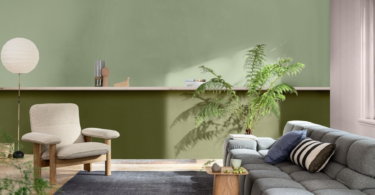Three floral experts weigh in on how best to choose and care for cut flowers in your home…
Choosing blooms
“When choosing flowers, make sure to choose ones that aren’t wide open, but have only started to open slightly,” says Angela Millar, owner of Frond & Filigree in Johannesburg. “For roses and gerberas etc, lightly squeeze the stems of the flowers, just below the actual flower, to make sure that they are firm and not too soft. For roses, you can also gently squeeze the base of the actual flower to make sure it is firm; this indicates freshness and good quality,” she adds. Note that green stems should be smooth and not slimy to the touch. Also avoid yellow, spotted or drooping leaves and buds.
Cutting stems
“Cut your flower stems at a 45-degree angle and always cut off around 3cm from the bottom of the stem,” explains Janine Vermeulen, floral stylist and creator of Foraged in Cape Town. “Place your flowers in lukewarm water but within a cool space. Warm water molecules move faster than cold ones and are absorbed by flowers a lot faster.”
Choosing containers
“I would suggest using a glass cylinder vase of any size, but if you would like to create a structured arrangement I would suggest a genie vase with some oasis or chicken wire to create movement,” advises Janine. “If you’re like me, go to second-hand shops or flea markets where you can pick up all kinds of interesting vessels,” she adds. Janine cautions against over-crowding flowers in a container and says to replenish the water often. “Re-cutting the stems frequently also helps to keep flowers alive for longer.”
Care and maintenance
“Beautiful blooms are just like little ones – they need to be lovingly cared for,” says Mira Cameron of the Sweet Pea Collection in Johannesburg. “Remove them from their packaging as soon as you get home, as this allows them to breathe and feel like they have their own ‘space’ again.” Mira also advises cleaning off all the foliage that will sit under the waterline once inside the vase. “This is very important, as the leaves begin to rot in the water and offer a perfect environment for nasty bacteria.” Another no-no is placing your blooms near a fruit bowl, as the natural ripening gas that fruits release will send a message to the flowers that it is time to begin the natural process of decaying. Keep them away from direct heat and sunlight too. The same applies to cold draughts. “Be sure to add some kind of flower food too,” says Mira. She offers this recipe: 1 quart water + 2 tablespoons lemon juice + 1 tablespoon sugar + 1/2 teaspoon bleach. “The lemon juice creates an acidic environment in the water, which prevents the ends of the stems from forming a callous, which would reduce the freedom of water flow. The sugar will feed the flowers and the bleach will kill any nasty bacteria in the vase or on the stems of the flowers already,” she explains.
“If you buy or receive an arrangement in a box or a basket, the flowers will probably be sitting in florist foam,” says Angela, “so remember to top up the water by pouring half a cup or so into the foam every few days, to stop the foam from drying out. It’s easy to forget this as you don’t see the water level as with a vase arrangement.”
The perfect arrangement
Many florists use a ‘grid’ plan to arrange flowers in a vase or container. You can make your own grid by sticking strips of clear tape horizontally and vertically across and just over the lip of the container. You’re aiming for a checkerboard effect. Place your blooms in the squares you’ve created and watch how they not only stay upright, but almost arrange themselves! This technique works especially well for short vases and low containers.
Image: iStock










Leave a Comment